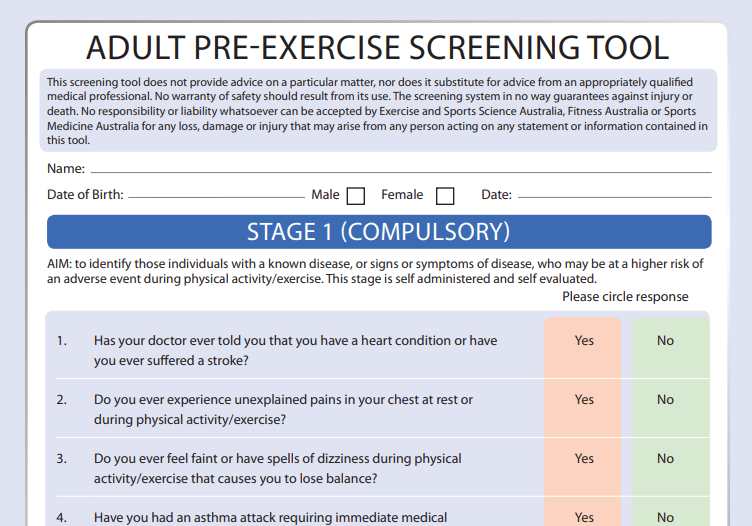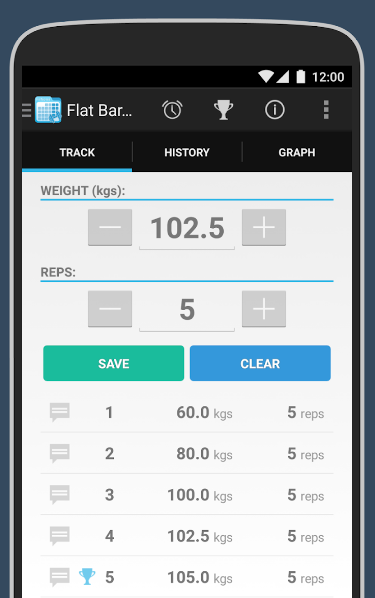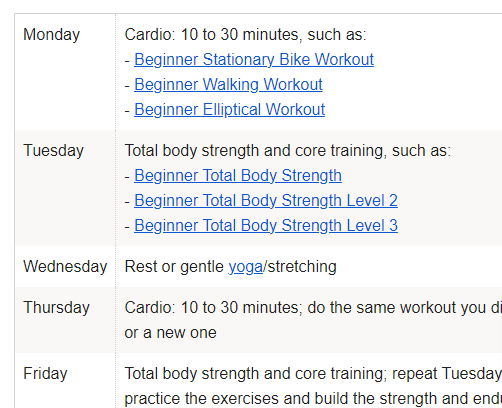Comprehensive Fitness Programs: What Every Fitness Program Should Include
Index
- Intro
- Health benefits of exercise programs
- Before starting an exercise program
- Assessing your fitness level for an exercise program
- Designing Your Clients’ Fitness Programs
- Assemble Your Clients’ Exercise Clothing and Equipment
- Getting Your Clients Started on Their Exercise Programs
- Monitoring Your Clients’ Progress
- Where to Find Support
- FAQ
- Conclusion
- Checklist
- Resources
Introduction
The ability to design effective and tailored fitness programs is your superpower as a fitness trainer.
Your clients look to you for guidance, motivation, and results.
In this guide, we will explore the essential steps to set up fitness programs that align with your clients’ diverse goals.
It also elevate your expertise as a trainer.
Firstly, we’ll delve into the core health benefits of exercise programs, emphasizing the positive impact they bring to your clients’ lives.
Next, we’ll stress the importance of client safety by guiding you through a pre-exercise screening tool.
From there, we’ll transition into crafting individualized fitness regimens that cater to various fitness goals and preferences.
With each step, you’ll gain insights and actionable strategies that enable you to create fitness programs that deliver tangible results while fostering long-term client satisfaction.

Health benefits of exercise programs
Understanding the health benefits of exercise programs is fundamental for fitness trainers.
It allows us to inspire and educate our clients about the profound impact of regular physical activity on their well-being.
From boosted cardiovascular health and increased muscle strength to the undeniable improvement in mental well-being.
This knowledge empowers us to guide our clients on a transformative journey toward a healthier and more fulfilling life.
In fact, when we consider the overall well-being of our clients, it becomes evident that every fitness program should include regular exercise.
Not only does it improve cardiovascular health, but it also enhances muscle strength, helping clients achieve their fitness goals effectively.
Furthermore, the positive impact on mental well-being cannot be overstated, as exercise releases endorphins, reducing stress and anxiety.
Before starting your client's exercise program

Complete the adult pre-exercise screening tool questionnaire.
Begin with safety.
Every fitness program should include prioritizing the well-being of the clients by having them complete the adult pre-exercise screening tool questionnaire.
It’s a reliable tool developed by AUSactive, Exercise and Sports Science Australia, and Sports Medicine Australia to identify potential risks.
Assessing your clients’ fitness level for an exercise program by helping your clients understand where they stand regarding fitness.
This assessment is the foundation upon which you’ll build tailored fitness programs for everyone.
Top 6 Essentials: What Every Fitness Program Should Include!

1. Assessing client's fitness level for an exercise program
Before embarking on a fitness journey, it’s crucial to assess your client’s current fitness level.
This assessment lays the foundation for a tailored exercise program that ensures safety and progress.
- Health Questionnaire – Start with a comprehensive health questionnaire to understand any medical conditions or limitations your client may have.
- Physical Measurements – Measure vital indicators like weight, BMI, and body fat percentage to gauge baseline health.
- Functional Tests – Assess their flexibility, balance, and mobility to identify potential areas of improvement.
- Strength and Endurance – Conduct strength and endurance tests to determine their muscular capabilities.
- Cardiovascular Fitness – Evaluate cardiovascular endurance through activities like a timed run or cycling test.
- Goal Setting – Finally, discuss their fitness goals, whether it’s weight loss, muscle gain, or overall wellness.
Assess these aspects meticulously.
You can craft a personalized exercise program that aligns with their abilities and aspirations.
This set them on the path to fitness success.
🌐 Sources
LinkedIn – Assessing Your Client’s Fitness Level For Functional
GymCloud – Assessing Your Client
OPEX Fitness – The Three Areas To Test In A Fitness Assessment

2. Designing Your Clients' Fitness Programs
Consider Your Clients’ Fitness Goals
Each client has unique objectives, whether it’s weight loss, muscle gain, or overall health improvement.
Understanding these goals is crucial for creating a program that resonates with your clients.
Selecting the Right Types of Exercises
A well-rounded fitness routine encompasses various exercise types, including cardio, weight training, and flexibility exercises
Customize these components for each client’s specific needs.
Cardio Exercise
- Cardiovascular exercises, commonly referred to as cardio, play a pivotal role in enhancing heart health and promoting calorie expenditure.
- Encourage your clients to explore enjoyable cardio activities like brisk walking, cycling, or dancing.
- These activities not only elevate heart rates but also make fitness engaging and sustainable for long-term health benefits.
Weight Training
- Weight training is a cornerstone of effective fitness programs.
- It not only promotes muscle growth, which is crucial for a toned physique, but it also revs up metabolism, aiding in weight management.
- Moreover, weight training strengthens bones, reducing the risk of osteoporosis.
- It’s essential to customize weight training routines based on clients’ fitness levels and objectives for optimal results.
Flexibility Training
- Flexibility training is a crucial component of any fitness program.
- It involves exercises like yoga and stretching, which promote increased joint mobility and muscle suppleness.
- These activities not only enhance range of motion but also play a vital role in injury prevention by reducing the risk of muscle strains and joint injuries.
- Tailoring flexibility exercises to your clients’ individual needs ensures they maintain optimal flexibility, aiding in overall physical well-being.
Core Exercises
- Core exercises are vital for overall strength and stability.
- These exercises target the muscles in your abdomen, lower back, and pelvis, helping to improve posture and prevent injuries.
- Incorporate core workouts into your clients’ routines to enhance their fitness programs.
- Core exercises include planks, Russian twists, leg raises, and bicycle crunches.
- Strengthening the core is essential for supporting other exercises and maintaining a strong foundation for your clients’ fitness journeys.
Crafting a Balanced Routine
- Balancing these exercise types ensures a comprehensive approach to fitness for your clients.
- By incorporating aerobic fitness, strength training, core exercises, balance-enhancing activities, and flexibility workouts.
- You provide a well-rounded fitness program that promotes overall health, strength, and agility, catering to your clients’ holistic fitness needs.
Where to Begin with Your Clients
Guide your clients with a suitable starting point based on their fitness levels.
You can refer to this sample workout schedule for assistance.
- Integrating Daily Activity- Encourage your clients to incorporate physical activity into their daily lives, such as taking the stairs and staying active throughout the day.
- Planning Diverse Workouts – Variety keeps fitness engaging. Plan different exercises to prevent monotony and target different muscle groups.
- Introducing High-Intensity Interval Training – HIIT workouts offer efficient results. They elevate heart rates and burn calories rapidly, making them a valuable addition to your clients’ programs.
- Importance of Recovery – Educate your clients about the significance of rest days.Overtraining can lead to injuries and fatigue. Document the recovery phases in their programs.

Documenting the Plan
Every fitness program should include a well-documented fitness plan as it is essential for your clients’ success and motivation.
There are several ways to document fitness plans, and online tools can greatly assist in this process.
- Written Programs – One of the most traditional methods is to create written fitness programs. You can use word processing software or even handwritten plans.
- Fitness Apps – Apps like MyFitnessPal, Fitbod, or Trainerize allow you to create, customize, and share workout programs with your clients. These apps often include tracking features and reminders to keep clients accountable.
- Online Training Platforms – Consider using specialized online training platforms like Trainerize or PT Distinction. These platforms offer features for creating and sharing workout plans, tracking progress, and communicating with clients.
- Spreadsheets – For a more customizable approach, you can use spreadsheet software like Microsoft Excel or Google Sheets to create fitness plans. This option provides flexibility in designing programs tailored to individual client needs.
- PDFs and Documents – You can create PDF documents with detailed workout instructions, schedules, and images or videos for exercise demonstrations. Share these documents with your clients via email or through a cloud storage service.

The easiest and most effective method often depends on your personal preferences and your clients’ needs.
Fitness apps and online training platforms streamline the process and offer real-time tracking, making them a popular choice.
However, some clients may prefer traditional written plans or PDFs for simplicity.
3. Assemble Your Clients' Exercise Clothing and Equipment
Ensure your clients have suitable workout attire and equipment.
Comfort and functionality are essential for a successful fitness journey.
Exercise Attire for Clients
- Moisture-Wicking Clothing – Encourage clients to wear moisture-wicking fabrics like Dri-FIT or Coolmax. These materials help wick sweat away from the body, keeping them dry during workouts.
- Proper Footwear – Advise clients to invest in supportive athletic shoes suitable for their chosen activities. Running shoes, cross-trainers, and specialized sports shoes are essential for comfort and injury prevention.
- Comfortable Sports Bras – For female clients, recommend well-fitting sports bras with adequate support to minimize discomfort during workouts.
- Breathable Socks – Socks made of breathable materials help prevent blisters and keep feet dry. Specific sports socks provide extra cushioning and support.
- Appropriate Bottoms – Clients should opt for workout bottoms that allow freedom of movement, such as shorts, leggings, or sweat-wicking pants.
Exercise Equipment for Clients
- Resistance Bands – These versatile tools can be used for strength training and flexibility exercises. They are compact and suitable for home workouts.
- Dumbbells – Adjustable dumbbells or a set of various weights are excellent for strength training exercises. They offer versatility and can accommodate clients at different fitness levels.
- Yoga Mat – For yoga, Pilates, or bodyweight exercises, a comfortable and non-slip yoga mat is essential for comfort and safety.
- Jump Rope – A simple but effective cardio tool, a jump rope provides an excellent cardiovascular workout and improves coordination.
- Foam Roller – Foam rollers aid in muscle recovery and flexibility. They can be used for self-myofascial release to alleviate muscle tension.
- Stability Ball – Great for core strengthening and balance exercises, stability balls are versatile additions to home workouts.
- Fitness Tracker – While not clothing or equipment per se, fitness trackers like Fitbit or Apple Watch can help clients monitor their progress and stay motivated.
- Water Bottle – Staying hydrated is crucial during workouts. Clients should have a reusable water bottle on hand to ensure they drink enough water.
Remember to consider your clients’ individual needs and fitness goals when recommending attire and equipment.

4. Getting Your Clients Started on Their Exercise Programs
Now, let’s guide your clients in initiating their fitness programs with confidence.
Gradual Progression
- When guiding clients to start their fitness journeys, stress that it’s a marathon, not a sprint.
- Gradually increasing workout intensity and duration is key to preventing overexertion and reducing the risk of injuries.
- This approach fosters sustainable progress and keeps clients motivated for the long haul.
Breaking It Down for Clients
- Recognize that clients often have hectic schedules.
- Suggest breaking workouts into shorter, manageable sessions throughout the day.
- This approach makes fitness more accessible and ensures clients can fit it into their busy lives.
Encouraging Creativity
- Inspire clients by showcasing that exercise doesn’t have to be conventional.
- Encourage them to explore activities like dancing, hiking, or engaging in sports.
- These exciting alternatives can help clients stay active while enjoying the process.
Emphasizing Proper Technique
- Prioritize proper form to prevent injuries.
- Ensure clients understand that using correct techniques is fundamental to their workout routines.
- This focus on form not only enhances safety but also optimizes the effectiveness of their exercises.
The Art of Listening to Your Clients
- Foster open communication with clients. Encourage them to share any discomfort or pain they experience during workouts.
- Listening to their bodies is paramount for avoiding injuries and tailoring workouts to their needs.
Staying Flexible with Client Plans
- Life’s unpredictability is inevitable. Emphasize the importance of flexibility in fitness plans.
- When clients miss workouts or need adjustments due to unforeseen circumstances, adapt their plans accordingly.
- This adaptability ensures their long-term success and commitment to their fitness journey.
In fitness coaching, prioritize gradual progression, breaking workouts into manageable sessions, and encouraging creativity.
Emphasize proper technique and listening to clients’ needs while staying flexible with plans for long-term success.

5. Monitoring Your Clients' Progress
Monitoring your clients’ progress is a crucial aspect of ensuring their success in their fitness journey.
Here are some key points to expand on this topic:
Motivation Through Tracking
- Monitoring progress provides tangible evidence of a client’s hard work and dedication.
- It serves as a source of motivation by showcasing the improvements they’ve made over time.
- This could include increased strength, endurance, or weight loss.
Workout Journals
- Encourage clients to maintain workout journals where they record their exercise routines, sets, reps, and any notes about how they felt during the workout.
- This not only helps track progress but also allows for adjustments and optimizations in their training plan.
Progress Photos
- Progress photos are a visual representation of a client’s transformation.
- Advise clients to take regular photos from different angles to observe changes in body composition.
- This can be a powerful motivator, especially when they see positive changes.
Fitness Apps
- In today’s tech-savvy world, fitness apps are valuable tools for tracking progress.
- Recommend reputable fitness apps that allow clients to log their workouts, nutrition, and measurements.
- These apps often provide graphs and charts to visualize progress.
Setting Realistic Goals
- To effectively monitor progress, it’s essential to set realistic and achievable goals with clients.
- These goals should be specific, measurable, and time-bound (SMART goals), making it easier to track their journey.
Regular Check-Ins
- Schedule regular check-in sessions with clients to review their progress.
- During these meetings, discuss any challenges or adjustments needed in their fitness plan.
This personalized approach keeps clients engaged and accountable.
Emphasize the importance of monitoring progress, providing practical tools and guidance.
We can help our clients achieve their fitness goals and maintain their commitment to a healthier lifestyle.

6. Where to Find Support For Your Clients
- Partnering with Local Resources – Local councils often offer fitness programs and resources. Explore what’s available in your area to support your clients.
- Collaborating with Registered Exercise Professionals – Working alongside qualified fitness trainers can provide your clients with personalized guidance and motivation.
- Professional Associations –Joining fitness professional associations like the National Academy of Sports Medicine (NASM), the American Council on Exercise (ACE), or the International Sports Sciences Association (ISSA) can provide access to educational resources, networking opportunities, and continuing education.
- Online Communities – There are numerous online forums, social media groups, and communities dedicated to fitness trainers. Platforms like LinkedIn, Facebook Groups, and Reddit have active fitness communities where you can exchange ideas, ask questions, and share experiences.
- Mentorship Programs – Seek out experienced trainers who are willing to mentor you. Learning from someone with more experience can provide valuable insights and guidance.
- Business Support – If you run your fitness business, consider joining local business organizations or seeking business coaching and support. Learning about marketing, finances, and management is crucial for success.
- Client Feedback – Don’t underestimate the value of feedback from your clients.
Regularly ask for their input to improve your services and tailor your programs. - AUSactive
If you are based in Australia, remember that AUSactive is a valuable resource.
They can provide support and information specific to the Australian fitness industry.
FAQ
Crafting personalized fitness programs involves understanding clients’ goals, determining relevant exercise metrics, conducting fitness assessments, and developing programs that target improvement.
Regular retesting ensures program effectiveness.
To set up online fitness programs, define your niche, outline program offerings, design the program, film workouts, establish communication channels with clients, and promote it effectively.
To grow your fitness business, streamline member management, introduce new services, collaborate with local businesses, leverage social media, prioritize client retention, and utilize email marketing strategies.
Creating fitness program proposals entails outlining goals, objectives, and the target audience, establishing a detailed timeline, and managing resources efficiently.
The number of workout days per week should align with individual goals and fitness levels. Learn to create workout routines that suit your clients’ objectives and enable steady progress.
Conclusion
As fitness trainers, you hold the power to positively transform lives through well-structured fitness programs.
Understanding the health benefits of exercise programs and ensuring safety through tools like the pre-exercise screening questionnaire is paramount.
Every fitness program should include crafting tailored programs that align with clients’ goals.
Choosing the right exercises, and promoting balance are key steps in this journey.
Initiating clients into their fitness routines with gradual progression, flexibility, and proper technique sets the stage for success.
Remember to actively listen to your clients and adapt their plans as needed. Monitor their progress diligently to keep motivation high.
Lastly, seek support from professional networks, local resources, and ongoing education.
Continuously improve your skills and stay connected within the fitness community.
You’ll not only enhance your career but also empower your clients to achieve their fitness aspirations.
Together, let’s inspire a healthier, fitter world. 🏋️♂️💪🌟
Checklist
A checklist summarizing the key points for setting up successful fitness programs:
Before Starting Your Fitness Program
☑ Complete the adult pre-exercise screening tool questionnaire for safety.
☑ Assess your fitness level and understand your clients’ fitness baseline.
Designing Your Clients’ Fitness Programs
☑ Consider your clients’ specific fitness goals.
☑ Select the right types of exercises based on goals (cardio, weight training, flexibility).
☑ Craft a balanced workout routine that suits each client.
☑ Provide guidance on where clients should begin and gradually progress.
☑ Encourage clients to integrate daily physical activity.
☑ Plan diverse workouts to keep it engaging.
☑ Introduce high-intensity interval training (HIIT) for efficient results.
☑ Highlight the importance of recovery and rest days.
☑ Encourage clients to document their fitness plans.
Getting Your Clients Started
☑ Emphasize gradual progression to avoid overexertion.
☑ Suggest breaking workouts into smaller sessions if needed.
☑ Encourage creativity by exploring non-conventional exercises.
☑ Stress the importance of proper technique to prevent injuries.
☑ Advise clients to listen to their bodies and adapt as necessary.
☑ Promote flexibility in client plans for life’s unpredictability.
Monitoring Your Clients’ Progress
☑ Advocate for tracking and monitoring progress for motivation.
☑ Suggest using workout journals, progress photos, or fitness apps.
Where to Find Support
☑ Join professional associations for education and networking.
☑ Connect with local fitness communities and attend events.
☑ Participate in online fitness communities and forums.
☑ Seek mentorship from experienced fitness trainers.
☑ Enroll in educational courses and certifications for ongoing learning.
☑ Attend fitness conferences and expos to network and learn.
☑ Explore online training platforms and fitness management software.
☑ Subscribe to fitness publications for industry insights.
☑ Utilize local resources, business support, and government programs.
☑ Consider collaboration with local fitness equipment and apparel brands.
☑ Engage with client feedback to improve your services.
Additional Resources
- AI Web Fitness – Program Your Workouts and Trainings for Clients: A Step-by-Step Guide
- Mayo Clinic – Fitness
- Harvard Health – What’s the Best Exercise Plan for Me?
- Whole Life Challenge – Design Your Own Workout Program
- Verywell Fit – Sample Workout Schedule
- Glofox – Quick Guide on How to Create a Fitness Program Online

